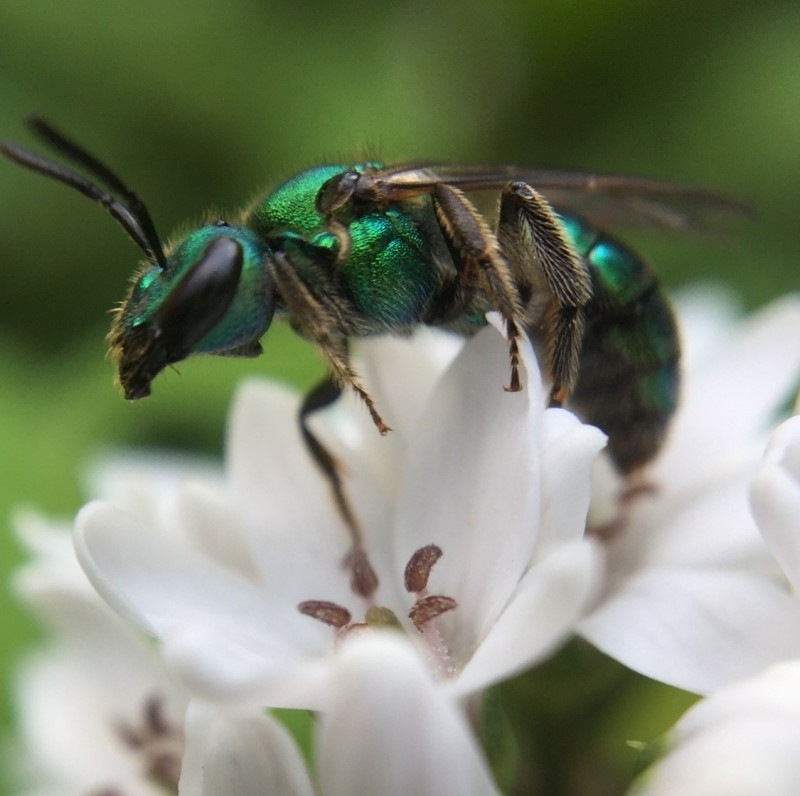
Anarchy is Bad for Picnics and Restaurant Patios
I’m not one to shed a tear when authoritarian rulers die, but once they’re gone, outdoor dining becomes a lot more dangerous. As summer wanes, the original queen in every yellowjacket (or other social wasp species) colony dies. Turns out that having a few thousand babies in the course of one season is enough to tire any Queen Mum to death.
As the original queen starts to forget the names of her offspring and where she left her reading glasses, the workers typically decide to take care of a few things before everything in the realm falls apart. The main thing is that they raise several new queens for the following season. But when the feisty new regals emerge, the young queens-to-be are no help whatsoever in keeping order at home. They run off with the nearest male wasp (drone) for a mating orgy, after which they hide in rotten logs, under leaves, or in nearby attics for the winter.
With no one to keep the workers in line, social order disintegrates within the colony at a time when its population is at its peak. All summer long, yellowjackets, white-faced hornets, and paper-wasps are busy with assigned chores like killing deer flies and tent caterpillars to feed the colony, pollinating flowers, and stinging anyone who ventures close to their nest, or looks at them askance, or makes a snide remark about their sister. But once Queen Mum expires, the rank-and-file workers do whatever they darn well please.
And what pleases unsupervised wasps is crash-landing in our food and exploring the insides of soft-drink cans and open beer bottles. They neglect their chores and go on a sugar binge. This is why yellowjackets and other colony-forming wasps seem “aggressive” in the fall – they’re gorging on sweets ’cause no one’s minding them. Also, as our summers get warmer, this can speed up the rate of larval development, possibly leading to higher numbers per colony.
Unlike honey bees, wasps can sting repeatedly, so it’s good to know some defensive tactics. Wear light-coloured clothing, as dark or bright colours attract them. If you’re headed to an outdoor venue, forget the perfume, cologne, and strong shampoo. These products will get you more attention from wasps than from anyone you were hoping to meet. And keep your drink covered to save you from being stung on the mouth by a wasp (and possibly from worse things, depending on the sort of event you’re at).
Don’t shoo away yellowjackets, as this can provoke them. If one lands on you it’ll move on shortly, but if you can’t wait, flick rather than swat it. Once a wasp stings, it releases an alarm pheromone that signals others to attack, so take cover if you do get stung.
When I was a kid, ground-nesting yellowjackets were “managed” by our dad, who poured gas or maybe kerosene in the hole and lit it. This was quite entertaining, though not always effective. We now know that when gas or oil gets spilled on the ground, it can pollute groundwater. It doesn’t take much in sandy soils or where the water table is shallow.
Here’s a better idea: If you find a ground nest, watch from a safe distance until you locate the entrance. At dawn, place a large glass bowl that you just borrowed over the yellowjackets’ door. It need not fit tight to the ground, but in uneven terrain, bank sand around the rim to fill gaps. The whole colony will eventually emerge and fly circles inside a clear bowl until they die.
Please note we do NOT have Asian or so-called murder hornets! Any oversize wasps you may encounter are cicada-killers which do not make colonies, or attack humans. Take heart – yellowjackets will die with the onset of freezing weather. All except next year’s authoritarian queens that will hibernate until spring.
Paul Hetzler is a former Cornell Extension educator. He likes picnics and wasps, but separately.

